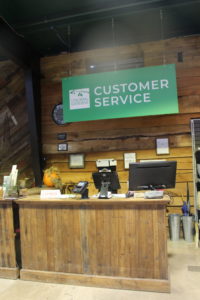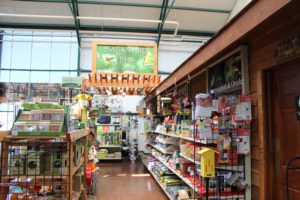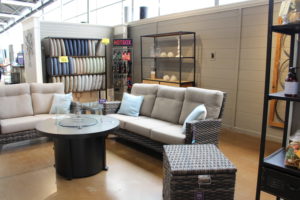Making Lease-Or-Buy Decisions
Zero-percent financing, single-payment leases and an assortment of other financial options are continuously offered to anyone looking to make automobile or light-truck acquisitions today. So how do you make the right car or truck decision for your garden center?
As a starting point, you can merely add up the payments and take the least expensive option, but often the apparent cheapest deal is not always the best deal. The decision to lease or buy a vehicle or piece of equipment is usually based on an analysis of the company’s cost of capital, the company’s cash flow and the time value of money.
Facing A Decision
Let’s assume you are faced with the following lease-or-buy decision. You can purchase a $25,000 delivery vehicle by putting 10 percent down and paying off the balance at 6 1/2-percent interest with five annual installments of $5,414. The vehicle will be used in your business for five years after which it can be sold for $2,500.
The alternative is you can lease the same delivery vehicle for five years at an annual lease payment of $6,016, the first payment of which is due on delivery. You will be responsible for the equipment’s maintenance costs during the lease. The vehicle will be turned in to the leasing company at the end of the lease.
You expect that your combined federal and state income tax rates will be 40 percent for the entire period. You can further assume that your cost of capital is 6 percent (the 10-percent financing rate adjusted by your tax rate).
How do you know which of these options is best?
Analyzing Your Decision
Figures 1, above, and 2, page 58, demonstrate how you can use a cash-flow analysis to assist you when making a lease-or-buy decision for your business. (The Figures use annual payments for the sake of brevity.)
Buying. Assume you chose the financed purchase of a $25,000 vehicle for 10-percent down, interest at 6 1/2 percent and five annual payments of $5,414 (all payments are made on the first day of the year). In this case, we are assuming straight-line depreciation.
Interest accrues on the outstanding balance of the loan at the end of each year. The fourth column in Figure 1, above, shows the portion of each annual payment that goes to principal and reduces the outstanding loan.
Leasing. Assume that same $25,000 vehicle will be leased for five years for an annual lease payment of $6,016, with the first payment being due on delivery and the following payments due on the first day of each subsequent year (see Figure 2, page 58). The business is assumed to have a combined federal and state income tax rate of 40 percent (tax benefits are computed as of the first day of the year following the year for which the lease deduction was claimed) and a 6-percent cost of capital.
In this case, if cost were the sole criterion for making the decision, you probably would be inclined to purchase the vehicle because in current dollars, the cost of leasing is $17,458 while the cost of purchasing is $16,420.
Even if cost isn’t your sole criterion, a cash-flow analysis is useful because it can show you how much you are paying for non-cost factors that may dictate your decision to lease.
We used the straight-line method of depreciation in Figure 1, page 57. This is a very conservative approach. Remember, the sum of after-tax earning, interest expense and deprecation expense is the amount lenders calculate as amount of money you have to service existing and new debt. Accelerated depreciation enhances current-year cash flow but usually at the expense of future years’ cash flows.
Know The Tax Implications
Before making any decision about leasing versus buying, remember that decisions under this area should always be made with the advice of a tax professional who understands your business.
Under a typical equipment lease, you are generally entitled to deduct your payments during the year of lease if you use the leased equipment in your business. This is usually referred to as an “operating lease.”
However, you need to be aware that, in certain situations, the Internal Revenue Service (IRS) may deny lease deductions if it audits your return and concludes that your lease is in reality an installment or conditional sale, sometimes referred to a “capital lease.”
If the IRS does reclassify your lease as a sale, your lease payments will not be deductible. Instead, you will be entitled to depreciation deductions as the owner of the equipment for tax purposes. Moreover, a portion of your lease payments, which the IRS effectively reclassifies as being installment payments on a purchase price, will most likely be considered interest that you can currently deduct.
What other types of factors attract the IRS’s attention? Here are just a few examples:
- A portion of your lease payments establishes equity in the leased equipment.
- You acquire title to the equipment after paying a specified amount of the lease.
- Your lease payments are made over a relatively short period of time and are inordinately large in comparison to the amount required to purchase the equipment.
- Your lease payments substantially exceed the fair rental value of the equipment.
- You acquire the equipment under a purchase option for a price that is nominal in relation to the equipment’s value (“dollar buyouts”) at the time you can exercise the option or that is nominal in comparison to your total payments under the lease.
- A portion of your lease payment is specifically designated as being interest or is readily recognizable as being the equivalent of interest.
If any of these factors describe an equipment lease you are preparing to enter, you should proceed with caution to avoid interest and penalties if the IRS reclassifies the transaction. If you have any doubt as to how the IRS may view the vehicle lease for your garden center, have your accountant or lawyer review the agreement before signing on the dotted line.

















 Videos
Videos





